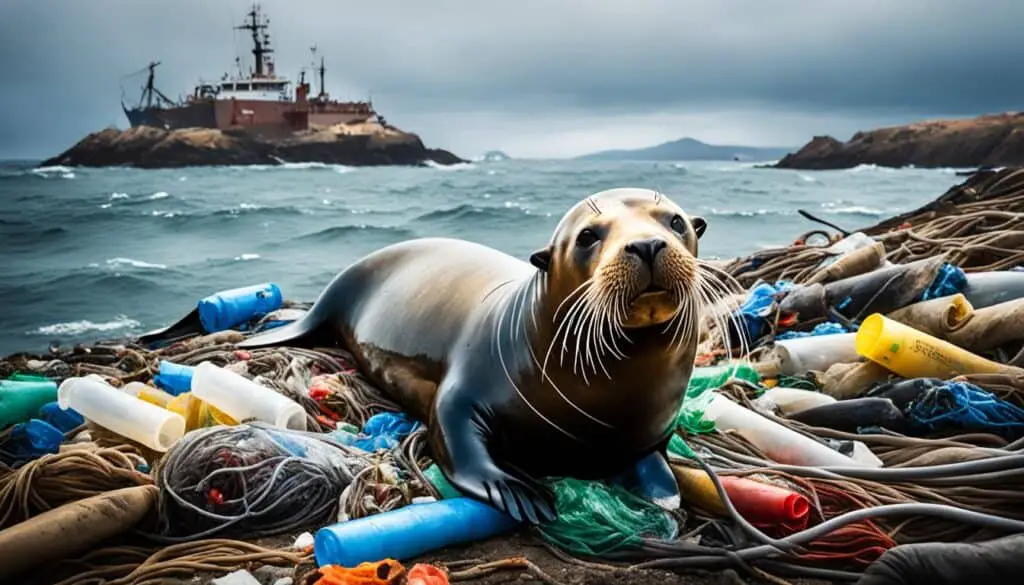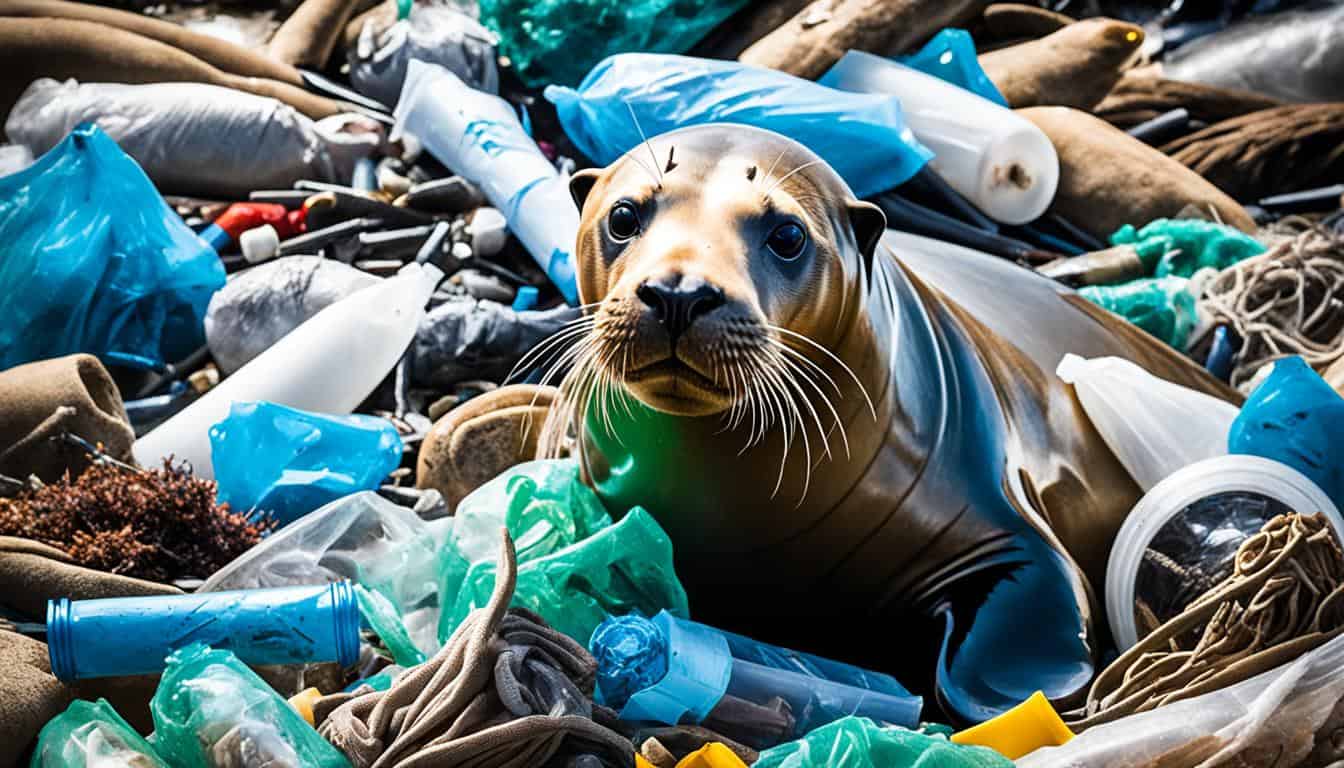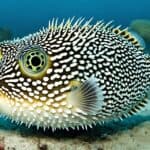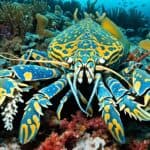Sea lions are crucial to our oceans, but they face many dangers. These threats are mainly because of what humans do. Let’s look into the main challenges they face, from survival to the health of our oceans.
There are six types of sea lions, with three at risk of disappearing. They deal with issues like habitat loss, climate change, overfishing, and pollution. These problems hurt their numbers and threaten their survival. We need to act to protect them.
Habitat Degradation and Loss
Habitat degradation is a big problem for sea lions. It hurts their numbers. Cities and coastal buildings are to blame. They take over the land where sea lions live and have their babies.
This makes it hard for sea lions to survive. They can’t find the places they need to live and have their young. This is bad news for their future.
Impact of Urban Development
Urban growth is a big threat to sea lions. Cities move closer to the coast, taking away their homes. This leaves sea lions with less space to live and find food.
Humans coming closer to their homes also stresses them out. This stress can make it harder for them to have babies. So, sea lion numbers go down in areas with lots of cities.
Effect of Coastal Construction and Tourism
Building things like hotels and marinas along the coast makes things worse for sea lions. These projects block their way to important places. They also bring more people to the area.
More people mean more noise and trouble for sea lions. This can push them away from their homes. We need to understand how we affect sea lions to help protect them.
Climate Change Effects on Sea Lions
Climate change is a big threat to sea lions. Rising temperatures and ocean acidity levels make their homes less safe. This affects their food supply, which is a big reason why sea lions are in danger.
Impact on Food Sources
Sea lions need stable oceans to find food. But warmer waters make fish and other prey move away or change their paths. This means sea lions have less food, which hurts their growth and ability to have babies.
This lack of food is a big risk for sea lions. It affects not just individual animals but whole groups that depend on these fish.
Temperature and Ocean Acidification Changes
Warmer waters and more ocean acid are big changes for sea lions. These changes mess with the fish’s homes and how they live. This makes it harder for sea lions to find food.
This makes sea lions more endangered. We need to protect their homes and help conservation efforts. This way, sea lions can survive the changing climate.
| Environmental Factor | Impact on Sea Lions | Long-Term Effects |
|---|---|---|
| Rising Temperatures | Altered distribution of prey | Increased competition for food |
| Ocean Acidification | Changes in prey health and availability | Potential decline in reproductive success |
| Shifts in Ocean Currents | Difficulty accessing nutrient-rich waters | Overall population decline |
What threats do sea lions face?
Sea lions face many dangers that threaten their survival. Each species has its own set of risks. Some are doing well, but others are in serious danger.
Specific Species at Risk
Many sea lion species are endangered, says the International Union for Conservation of Nature (IUCN). The Australian, Galapagos, and New Zealand sea lions are among those at risk. The Galapagos sea lion is very vulnerable because it lives in a small area. It’s more likely to be affected by climate change and diseases.
The Californian sea lion is listed as “least concern.” It faces fewer threats right now.
General Threats Across Populations
Sea lions also face threats that affect all populations. These include damage to their homes, pollution, and changes in fishing. These issues can reduce their ability to survive. It’s important to know about these threats to help protect sea lions.

Overfishing and Bycatch Issues
Overfishing is a big problem for sea lions. It limits their food and threatens their survival. Ecosystems are under pressure from commercial fishing, showing the harm of overfishing. Sea lions need different fish for food, and their numbers are going down because of bad fishing.
This makes their health and the health of marine ecosystems worse.
Impact on Prey Availability
Overfishing hurts sea lions’ diets a lot. Important fish for them are getting less common because of commercial fishing. Sea lions then have to work harder to find food.
This can make them malnourished and less able to have babies. It puts more stress on sea lions that are already struggling. Knowing how overfishing affects their food is key to helping marine mammals.
Consequences of Bycatch
Bycatch is another big problem for sea lions. Fishing gear often catches marine mammals by mistake, which can hurt or kill them. When sea lions get caught, they can’t hunt well.
This hurts their populations a lot. We need to work on reducing bycatch and fishing in a better way to protect these amazing animals.
FAQ
What threats do sea lions face?
Sea lions face many threats like habitat loss, climate change, overfishing, pollution, and disease. It’s important to understand these threats to help protect sea lions.
How does habitat degradation affect sea lions?
Habitat degradation harms sea lions by destroying their homes. This includes areas where they give birth and rest. It makes it hard for them to survive and reproduce.
What role does climate change play in sea lion populations?
Climate change changes the food and homes of sea lions. Warmer seas and ocean acid make it harder for them to find food. This affects their health and survival.
Which sea lion species are considered endangered?
The Australian, Galapagos, and New Zealand sea lions are endangered. The Galapagos sea lion is especially at risk due to its small range and vulnerability to climate change and disease.
How does overfishing impact sea lions?
Overfishing reduces the fish that sea lions need to eat. This hurts their health and ability to have babies. It makes it harder for them to survive.
What are the pollution effects on sea lions?
Pollution harms sea lions by causing health problems. They can eat harmful plastics and toxins. This can lead to diseases, lower birth rates, and fewer sea lions.
How does entanglement in fishing gear threaten sea lions?
Sea lions can get caught in fishing gear, which can hurt or kill them. This stops them from finding food and can harm their health for a long time.
What can be done for marine mammal conservation?
We need to protect sea lions by saving their homes and changing fishing ways. We also need to fight climate change. Your support and awareness can help a lot.







